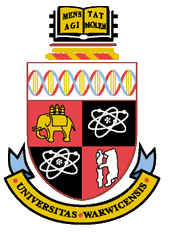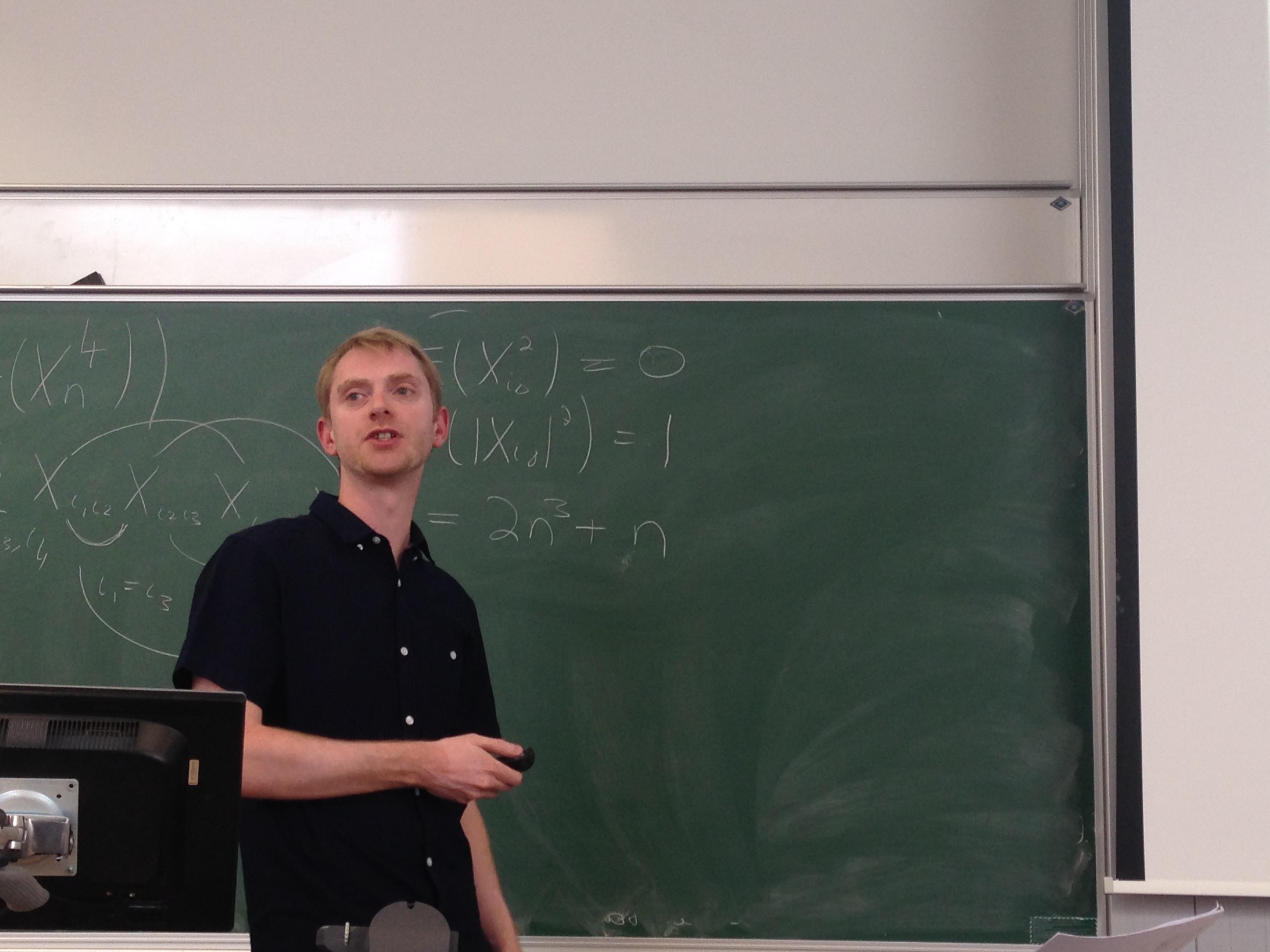Warwick Statistical Mechanics Seminar
in the Department of Mathematics
 |
This term, all seminars take place Thursdays at 2pm, room MS.04 (Zeeman Building), unless indicated otherwise. |
 , 14.06.2018 |
| 26.04.2012 | Piotr Milos (University of Bath) Gaussian free field with non-homogeneous pinning Introducing a disorder (random environment) proved to lead to new fascinating phenomena in various areas of probability. In my talk I will present a model of Gaussian free field with homogeneous pinning and compare it to the case of random pinning potential. Our model is one of the first of its type where the effects of disorder were studied in d>1 case. (Based on joint work with Loren Coquille - Universite de Geneve) |
| 03.05.2012 | Christophe Bahadoran (Universite Blaise Pascal (Clermont 2)) Antishock invariant measure for the slow-bond TASEP The TASEP is an interacting particle system in which particles on the 1d integer lattice jump to the right at unit rate subject to the exclusion constraint (at most one-particle per site). Its apparent (but deceitful) simplicity and its close connections with Burgers equation, KPZ equation, last passage percolation, traffic-flow modeling and queuing theory make it one of the most intensely studied models in statistichal mechanics. For the infinite translation-invariant system, the set of invariantdistributions has been known since Liggett (1976). It consists of product Bernoulli measures of arbitrary mean (hohmogeneous density states) and so-called blocking measures (0-1 shocks). When an inhomogeneity or boundary is introduced, most or all explicit invariant measures are lost. A natural question is the existence of invariant measures which are asymptotic to Bernoulli measures away from the inhomogeneity/boundary. I shall describe some work in progress in this direction. In the case of slow-bond TASEP, we are interested in a stationary state whose profile is a decreasing shock that describes the jammed phase near a bottleneck, and can be viewed as an entropy-violating shock in Burgers equation. |
| 10.05.2012 | Nathanaël Berestycki (University of Cambridge) A new approach to coalescing flows The Brownian web is a process which was introduced by Arratia (1979) and Toth and Werner (1997), and which formally corresponds to starting coalescing Brownian motions from every space-time point. Inspired by the work of Schramm and Smirnov on the scaling limit of critical percolation, we provide a new state space and topology for this process which greatly simplifies several fundamental questions regarding this process. In particular, an invariance principle for coalescing random walks is proved under an optimal assumption of a moment of order two. In previous works, a moment of order three was shown to be both necessary and sufficient for this result to hold. Our approach is sufficiently simple and general that we can handle substantially more complicated coalescing flows with little extra work -- in particular similar results are obtained in the case of coalescing Brownian motions on recurrent fractals such as the Sierpinsky gasket. Joint work with Christophe Garban (ENS Lyon) and Arnab Sen (Cambridge). |
| 17.05.2012 | Florian Völlering (Universiteit Leiden) Random Walks in Dynamic Random Environments A random walk represents a basic model for motion in a chaotic or noisy environment. The fact that its scaling limit is a Brownian motion (with or without drift) is widely used. However this fact uses the i.i.d. structure of the increments which is not present in actual models. The study of the macroscopic motion of a particle as the result of microscopic interactions with its changing environment leads to random walks in dynamic random environments. One of the central questions is under which conditions the random walk has standard/non-standard behaviour. I will present conditions for standard behaviour, and an example for non-standard behaviour with a phase transition. |
| 24.05.2012 | Charles-Édouard Pfister (École Polytechnique Fédérale, Lausanne) Guessing, Rényi's Entropy and Large Deviations I will consider the problem in cryptography of guessing a random string of length n by a brute force attack. This problem is strongly connected to Statistical Mechanics via large deviations theory and the main quantity involved in its solution is Rényi's entropy. |
| 31.05.2012 | (No seminars) |
| 07.06.2012 | |
| 14.06.2012 | |
| 21.06.2012 | |
| 28.06.2012 | |